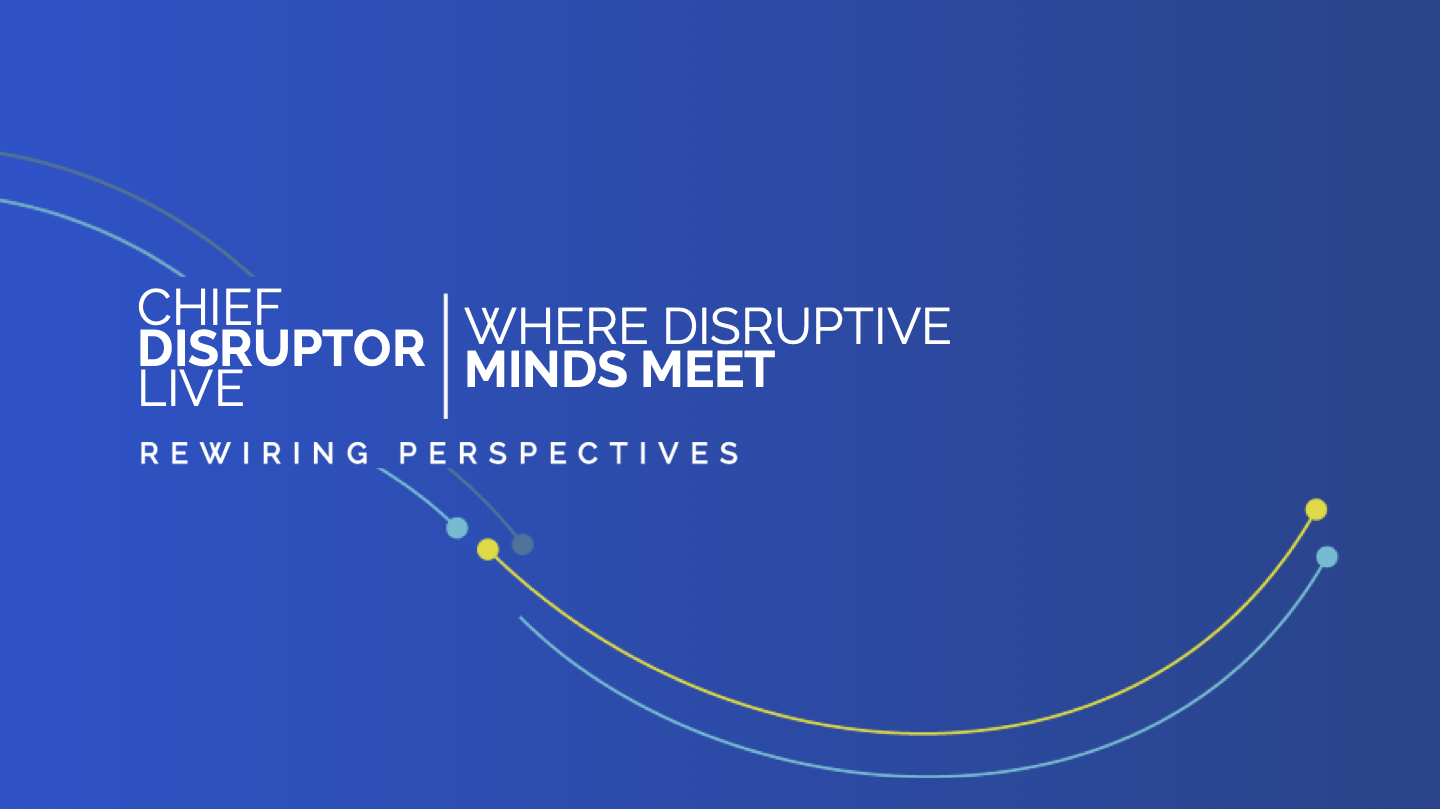Chief Disruptor LIVE made an incredible in-person return last week at The May Fair Hotel. Members, partners and speakers all converged for a day of keynotes, interviews, panels, roundtable discussions and networking. We discussed and debated the meaning of disruption, data transformation, work and wellbeing, tech for positive change, the metaverse and so much more. There might also have been a few glasses of prosecco to top it all off!
Join me as we reflect upon five key takeaways from a jam-packed Chief Disruptor LIVE:
DISRUPTION IS EVER-PRESENT BUT HOW YOU ADAPT IS KEY
Disruption has been the focal point of our community for more than five years and, on Wednesday 25th May, it was clear for all to see that it is not only here to stay but, arguably, it is more relevant than ever. Firstly, we saw that, in line with one of the biggest talking points of the 2020s, disruption is undoubtedly about people. Our headline sessions, showed that achieving a culture of disruption is key for embracing the new world of work. A consensus emerged amongst members that essential to disruption is democratising innovation by creating a workforce full of disruptors (even more reason to bring along your colleagues next time!).
Secondly, our speakers, whether from 150 year old insurers, charities, or newly-formed startups, emphasised disruption is not just for disruption sake. For some, disruption is driven by a mission, whether that is to be the first human-centric metaverse, the world’s greenest football club or the most data-driven airline. For others, disruption is about identifying an opportunity to do something better such as humanising dating apps or making online banking easier. By focusing on purpose, beyond just profit margins and market share, organisations plot out their own path towards disruption.
Finally, whilst we all want to move on from the uncertainty and downturn of the pandemic, it is undoubtedly the backdrop for disruption in the future. Frequently, pandemic-accelerated digital transformation was referenced, whether that be the UK’s social and healthcare staff shifting to online working to distributing digital vouchers to thousands of disrupted customers. The pandemic deprioritised financial, regulatory and bureaucratic red tape in favour of catering to customers and empowering employees in an agile manner. In fact, digitisation projects which would usually take years took days or even hours. So, when it comes to disruption, as one of our speakers said, “urgency drives innovation”. The big question now is: how do we learn from this to encourage disruption in the future?
IT'S ABOUT THE CUSTOMER
Our Disruptive Trends Report 2022 showed that “improving the customer experience” is the second most important digital initiative for our members and this trend was apparent at Chief Disruptor LIVE. From a technology perspective, we saw how placing the customer at the centre of your world is key. Although, just as we thought we had perfected the digital customer journey, offering increasingly personalised and frictionless experiences, we are now experiencing the return of in-person customer experience. Take for example buying a car, a customer might want to communicate with sellers, sort their finance and exchange documents online but when it comes to test-driving and viewing a car, a physical experience is key. As we look forward, organisations will not only need to continually perfect their digital experiences but also explore how to better bridge the gap between digital and physical experiences. For some, it might be time to look to the metaverse?
SO WHERE'S THE TECHNOLOGY IN ALL THIS?
Whether it is cloud, big data or AI, it has always been crucial that organisations across industry remain at the forefront of discussions and debate on emerging trends in technology. Our community gathering was no different; from the future of AI to utilising blockchain within supply chains, we have come away with an appetite for more. However, what did emerge is the importance of building the foundations for technological innovation. Large organisations might be plagued by historical issues associated with data, legacy technology and culture. Meanwhile, smaller organisations and startups might lack talent and skills and incur problems associated with risk-taking. Ultimately, a strong foundation with which to explore these emerging technologies is crucial.
LET'S WORK TOGETHER, FOR EACH OTHER
Our “The Balancing Act: Profit and Purpose in Tech” stream explored a growing point of focus within our community: sustainability. Our recent research showed that under the pressures of the pandemic, sustainability has been perennially pushed down agendas. So what can we do about this now? On the day, there were a number of opinions and solutions. Perhaps, as explored in an interview, there is nothing that we can do; arguably, the socio-economic and political powers which reinforce our system are too strong to overcome. However, as we explored in our cross-industry panel later on, a consensus emerged: collaborating and sharing information and technology will be crucial in attending to these goals. Panellists exploring this topic, from across health insurance, construction and charity industries, all suggested creating ecosystems between and across industries to help push the agenda and boundaries of social, economic and environmental sustainability. With collaboration, as one of our panellists quite simply put, “What can’t we do about it?”.
THE BFD (BIG FRIENDLY DISRUPTOR)
As our final takeaway, our sessions exploring the future of work and wellbeing encouraged us to be friendly disruptors. In particular, when addressing the challenge of recruitment and retention, friendly disruption is about engaging and inspiring employees in novel and innovative ways; beyond that of the cycle to work schemes and flexible hours. The session offered up some solutions varying in creativity. In some cases this might be offering employees the chance to adopt a ‘graduate scheme’ rotation of roles where they get to explore and learn within different departments. Alternatively, organisations with partnerships might encourage employees to take on secondments in each other's organisations; this would encourage a cross pollination of skills and ideas. Finally, and most creatively, organisations could explore the possibility of employees pursuing portfolio careers where they work in 2 or 3 companies a week whilst running their own side hustle and making the school run every day! Is this the future of work?
So, as the dust settles on Chief Disruptor LIVE and we look forward to the set of virtual and physical activities and socials lined up throughout the summer, we hope you have taken away a number of insights to share with your colleagues, teams and wider organisation and we look forward to seeing you again in November. As always, we would love to get feedback from you so that we can design our content and experiences around our members. This really is your community so have your say on what subjects you would like us to focus on next time, the feedback survey is below:




Leave a Comment